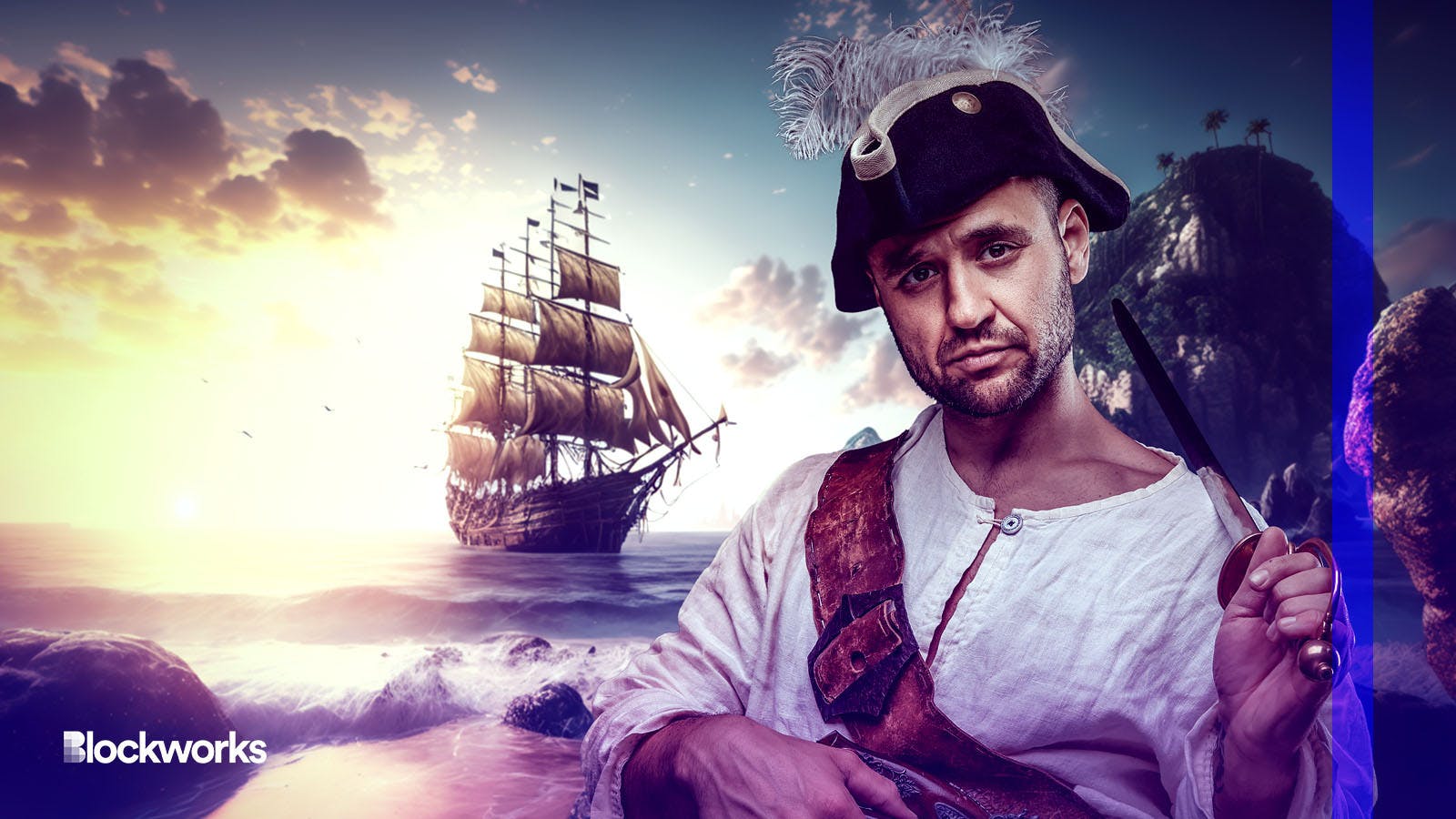Here’s How to Not Feel Guilty About Using AI to Make Yourself Into a Handsome Pirate
Cries of plagiarism can be nipped in the bud if blockchain is used with AI to give artists protection over their own art

FXQuadro /Shutterstock modified by Blockworks
Artificial intelligence is making everyone a would-be poet and artist. But for the real creatives out there, it’s blockchain that will provide value through scarcity and authenticity.
The recent rise of AI tools like Midjourney and DALL-E has led to an explosion of creative output, giving every budding artist an easy way to turn loose visions into concrete realities.
But many professional creatives have a more tortured relationship with this technological breakthrough, especially when it comes to growing the value of their creations and being compensated for their contributions to these AI tools’ vast datasets.
It is clear that blockchain is even more essential for artists and creators now that advanced AI technologies have been released into the wild.
AI is only as creative as its data set
There is no doubt that many of the things AI is being used to create are impressive, aesthetically pleasing, and seemingly “creative.”
But these AI tools were trained on vast data sets which contain countless works from human artists and creators — nearly all of whom are not being compensated for their contributions. It’s no surprise, then, that there is a growing belief that some forms of AI are essentially a technologically advanced form of plagiarism.
You may get a kick out of prompting Midjourney to create a portrait of Pikachu in the painting style of Gustav Klimt, but having the ability to spin up derivative works based on others’ intellectual property and creative style is illegal at worst and morally dubious at best.
This is not to say that AI is bad for artists, or that generative content has no value.
Used correctly, these tools open many exciting, pro-social possibilities for ordinary individuals and professional creatives alike. But to avoid a dystopian reality where humanity is sucked out of the creative process, AI developers should first secure permission to use artists’ works when training their software, provide compensation to these creators, and give them the option to remove their works from the data set if they so desire.
Blockchain technology is perfectly suited to provide these artist protections. By recording ownership on a blockchain ledger, artists can protect their intellectual property rights, receive automated royalties whenever their work is used in a training set, and prevent others from plagiarizing or copying their work.
Authenticity will always matter
Within the world of art, it is essential to balance both abundance and scarcity — an artist’s eventual goal is to create ever more valuable art that feels both exclusive and accessible to an audience.
Using today’s AI tools, it’s increasingly effortless to generate high quality creative works in seconds — which is leading to more creative abundance. But for the real creatives out there, these tools lack the scarcity aspect that makes art actually valuable: This is where blockchain steps in.
It is already shockingly simple for anyone to use AI to generate new artworks that resemble those of existing artists or create convincing “photographs” and “footage” of public figures. By recording ownership and transactions on a decentralized and immutable ledger, blockchain can provide authenticity and scarcity for any form of digitized art or cultural asset that will then distinguish it from any inauthentic AI version.
For instance, by digitizing something like a rare historic photograph and then releasing it as a limited edition collection, museums could simultaneously verify that the photograph is real (as opposed to AI-generated), while also creating new forms of cultural engagement and value.
There will always be a demand for traditional artwork and creative pieces born from manual processes. What many collectors value is the human imagination and effort behind a work: There is no replacement for authenticity.
Not much is keeping people from printing their own baseball cards or buying imitation art — but there’s a reason a 1952 Mickey Mantle card sold for $12.6 million last year and the Mona Lisa is considered priceless, while you don’t see DALL-E images reaching anywhere near those sort of price points (or any price points, for that matter).
Blockchain will increasingly draw attention to the value of scarcity by ensuring that original works like the Mona Lisas of the world are valued and protected.
In other words, there’s a fair chance that most valuable NFTs in the future will consist of collections that are designed to preserve specific historical or cultural artifacts, as opposed to the pricey generative art collections we see today.
AI as an interface, blockchain as the infrastructure
The internet has always been both a gift and a curse for creators.
On one hand, the internet provides near-limitless opportunities for artists to showcase their work to a global audience and connect with potential buyers. However, the internet also poses significant challenges for artists in terms of copyright infringement and compensation.
With this new popularity in AI, these opportunities and challenges have grown exponentially overnight. We’ve reached a strange inflection point where it has never been easier to produce creative works, even as the creative process is at risk of being commoditized and automated.
The most sustainable path forward is to continue creating more sophisticated, openly available AI interfaces while leveraging blockchain technology as a base layer of data integrity, availability, and trust.
Both artificial intelligence and blockchain are at the “Web2.5” stage of their evolutionary trajectory: an open, transitory state from “emerging tech applications” to “de facto solutions” for many sectors of the current internet.
As long as these technologies are used to make exciting new things AND protect existing value, everyone stands to benefit.
Get the news in your inbox. Explore Blockworks newsletters:
- The Breakdown: Decoding crypto and the markets. Daily.
- 0xResearch: Alpha in your inbox. Think like an analyst.






